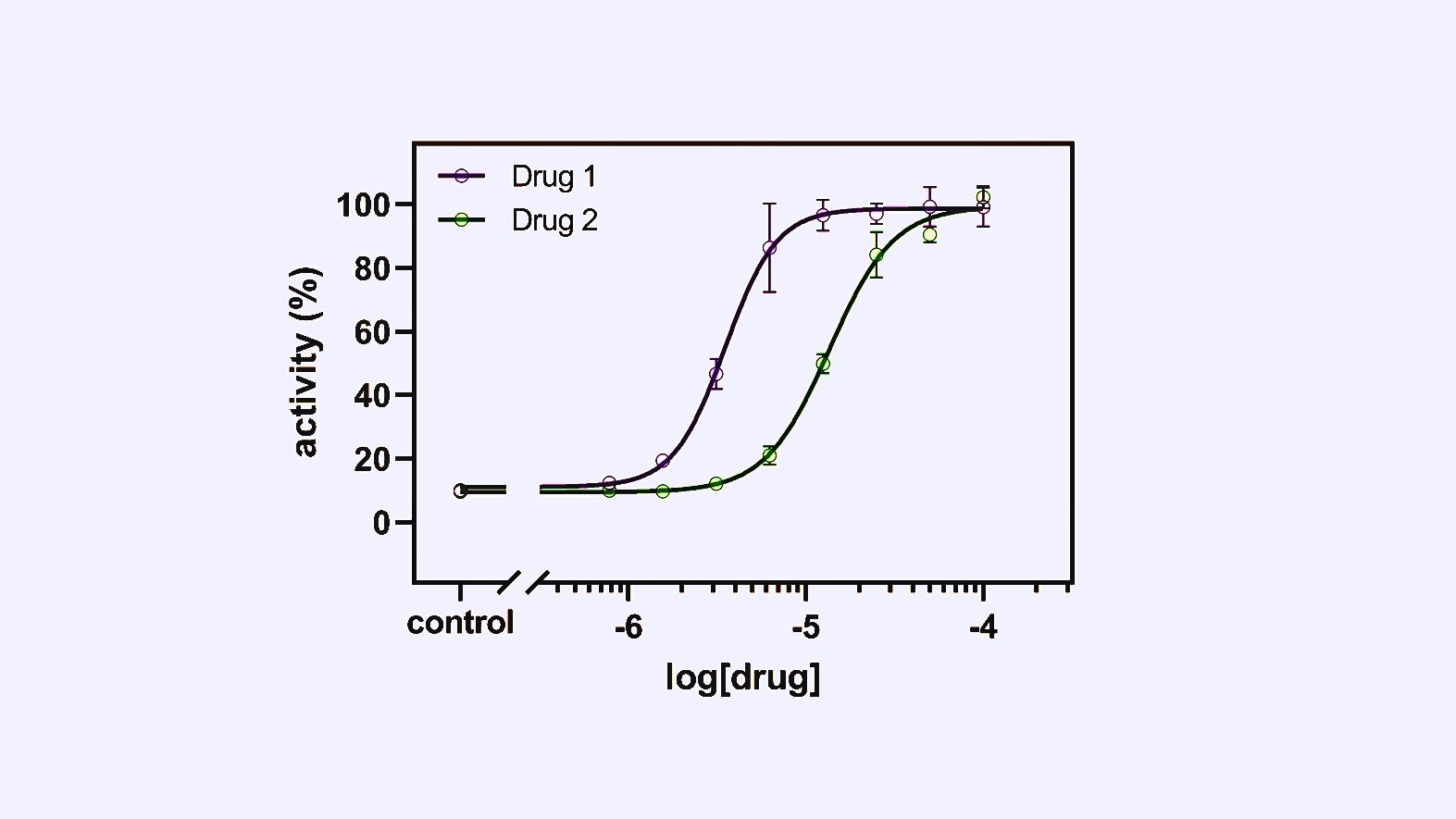Aim: To record a concentration-response curve (DRC) of acetylcholine using the rectus abdominis muscle preparation of a frog.
Principle:
Dose (concentration )-response curves (DRC) demonstrate graded responses to drugs or agonists where an increase in response is recorded with a subsequent increase in the dose or the concentration of the drug. The dose-response curve is sigmoid or S-shaped. The first part (25% of the graph) of the curve has poor discrimination between the doses. whereas the middle portion of the curve shows greater sensitivity to different concentrations, and the responses to increasing concentrations are linearly differentiated. The last of the curve (plateau )shows the ceiling effect where no more increase in the response is seen with a further increase in the dose.
When the doses are increased in geometric progression (logarithmic intervals) and the response is plotted against logarithms of doses, the relationship is called a log dose-response curve.
Rectus abdominis muscle is a skeletal muscle, and the response of acetylcholine is described as the nicotinic response.
Requirements:
Animals: Frog
Drugs :Acetylcholine stock solution(1mg/ml)
Physiological solution: Frog Ringer
Procedure
- Pith or stun the frog and lay it on its back on the frog-dissecting board. Pin the four limbs.
- Remove the skin on the abdomen and expose the rectus abdominis muscle,
- Cut and prepare two rectus muscle preparations from each frog. Tie a thread to the top and bottom of each muscle preparation before detaching the muscle from the body of the frog.
- Mount the preparation in an upright position in the organ bath containing frog Ringer solution under a tension of 1 g. There is no need of maintaining the bath temperature since it is an amphibian tissue preparation. Bubble the organ with air.
- Relax the tissue for 45 min, during which period wash the tissue with the fresh quantum of a ringer at least four times.
- Record the concentrations due to acetylcholine using either a simple sideway or frontal writing lever. Ninety-second contact time and a total 5 min time cycle may be used for proper recording of the responses.
- Record at least four responses to increasing doses of acetylcholine or till you get the maximum response. The maximum response is achieved if one gets the same or slightly less response with higher concentrations. Properly label the graph, put the date, and your name, and fix the tracing with the help of a fixing solution.
- Measure the height of the response (mm) and draw a dose (concentration)- response graph.
REPORT:
Make sure you also check our other amazing Article on: Study of diuretic activity of drugs using rats or mice
